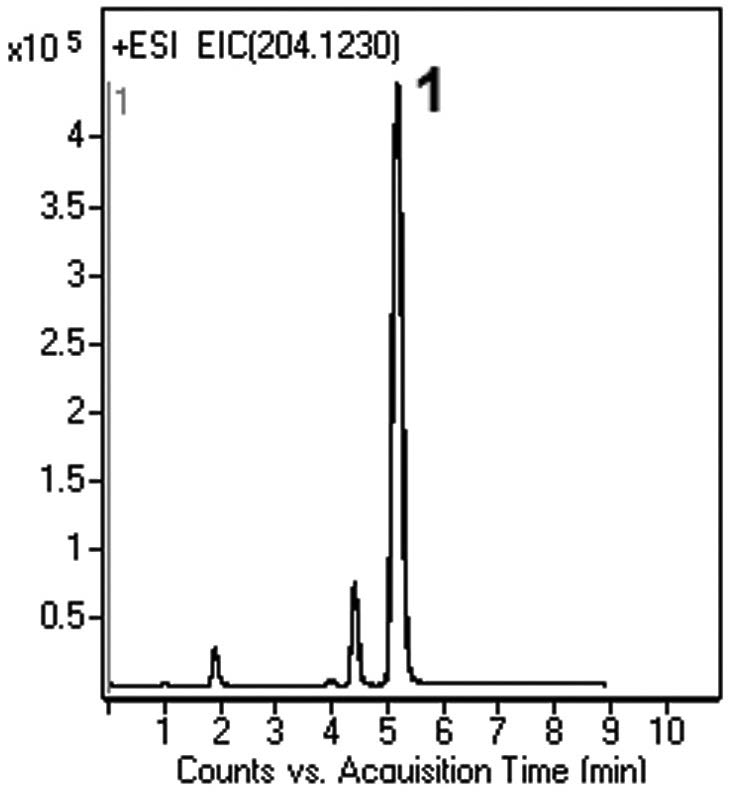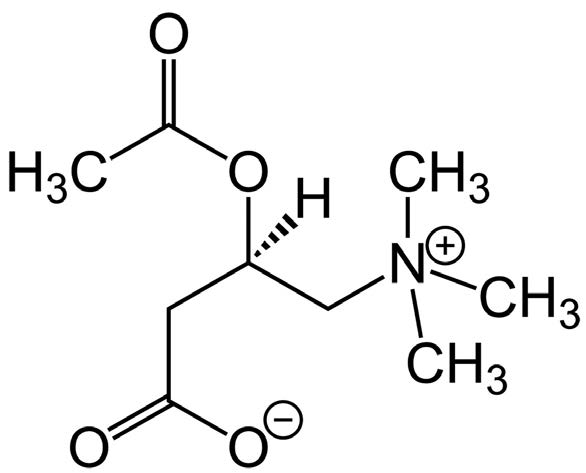Spiked Plasma Samples with Acetyl-L-Carnitine
The Method in this Application Note was designed to be suitable for the routine analysis of Plasma Samples obtained from animal and human Pharmacokinetic studies in which Acetyl-L-Carnitine (ALC) is administered.
The calibration curve prepared for the Plasma Samples showed good Linearity (R2 = 0.999) and the Precision was good with low %RSD (0.2 and below). The advantages of this Method over other published LCMS methods are the short Equilibration Time between runs and the Repeatability (3 overlaid injections are presented in the Chromatogram below). Also, this Method uses high organic content in the Mobile Phase, which is more suitable for MS and offers better ionization and improved signal to noise.
Peak:
Acetyl-L-Carnitine (ALC) 204.1230 m/z [M+H]+
Method Conditions
Column: Cogent Diamond Hydride™, 4μm, 100Å
Catalog No.: 70000-15P-2
Dimensions: 2.1 x 150mm
Mobile Phase:
—A: DI Water with 0.1% Formic Acid
—B: Acetonitrile with 0.1% Formic Acid
Gradient:
| Time (minutes) | %B |
| 0 | 80 |
| 1 | 80 |
| 5 | 30 |
| 7 | 30 |
| 8 | 80 |
Post Time: 3 minutes
Injection vol.: 1μL
Flow rate: 0.4mL / minute
Detection: ESI – POS – Agilent 6210 MSD TOF Mass Spectrometer
Sample Preparation: Plasma from healthy individuals was spiked with an ALC standard solution and prepared for injections as described by Tallarico et al. [1]. To prepare standard curves dialyzed Plasma was used, to which known amounts of the analyte were added.
t0: 0.9 minutes
Note: ALC is used to improve mitochondrial function. ALC was proposed as an effective drug to be supplement in peripheral arterial disease so there is a need to study and fully understand the Pharmacokinetics of administered ALC.
[1] Carlo Tallarico, Silvia Pace, and Antonio Longo, Rapid Communications in Mass Spectrometry, Vol. 12, 403–409 (1998).
Attachment
No 240 Acetyl-L Carnitine in Plasma with LCMS pdf 0.3 Mb Download File




